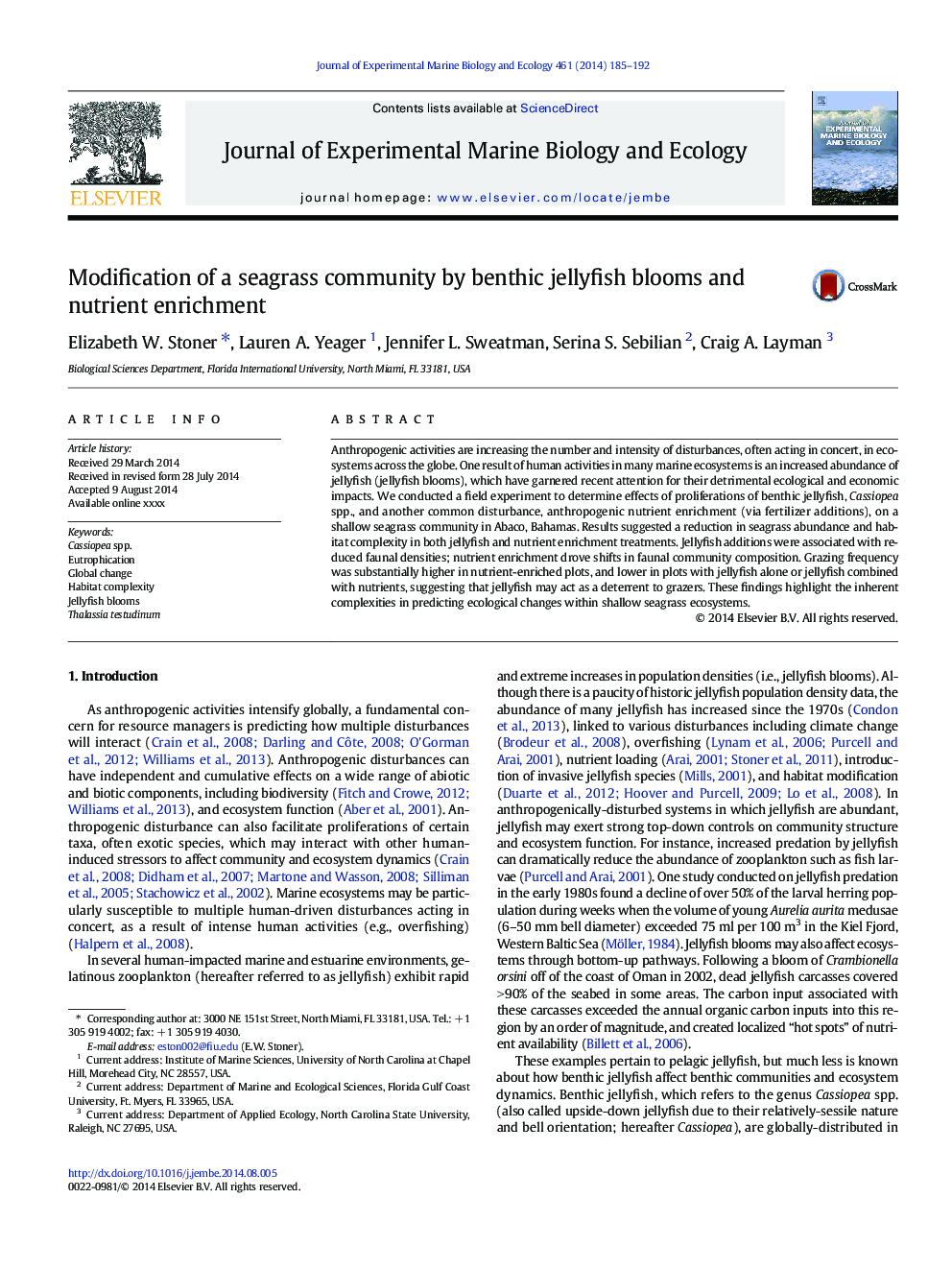| Article ID | Journal | Published Year | Pages | File Type |
|---|---|---|---|---|
| 6303931 | Journal of Experimental Marine Biology and Ecology | 2014 | 8 Pages |
Abstract
Anthropogenic activities are increasing the number and intensity of disturbances, often acting in concert, in ecosystems across the globe. One result of human activities in many marine ecosystems is an increased abundance of jellyfish (jellyfish blooms), which have garnered recent attention for their detrimental ecological and economic impacts. We conducted a field experiment to determine effects of proliferations of benthic jellyfish, Cassiopea spp., and another common disturbance, anthropogenic nutrient enrichment (via fertilizer additions), on a shallow seagrass community in Abaco, Bahamas. Results suggested a reduction in seagrass abundance and habitat complexity in both jellyfish and nutrient enrichment treatments. Jellyfish additions were associated with reduced faunal densities; nutrient enrichment drove shifts in faunal community composition. Grazing frequency was substantially higher in nutrient-enriched plots, and lower in plots with jellyfish alone or jellyfish combined with nutrients, suggesting that jellyfish may act as a deterrent to grazers. These findings highlight the inherent complexities in predicting ecological changes within shallow seagrass ecosystems.
Related Topics
Life Sciences
Agricultural and Biological Sciences
Aquatic Science
Authors
Elizabeth W. Stoner, Lauren A. Yeager, Jennifer L. Sweatman, Serina S. Sebilian, Craig A. Layman,
